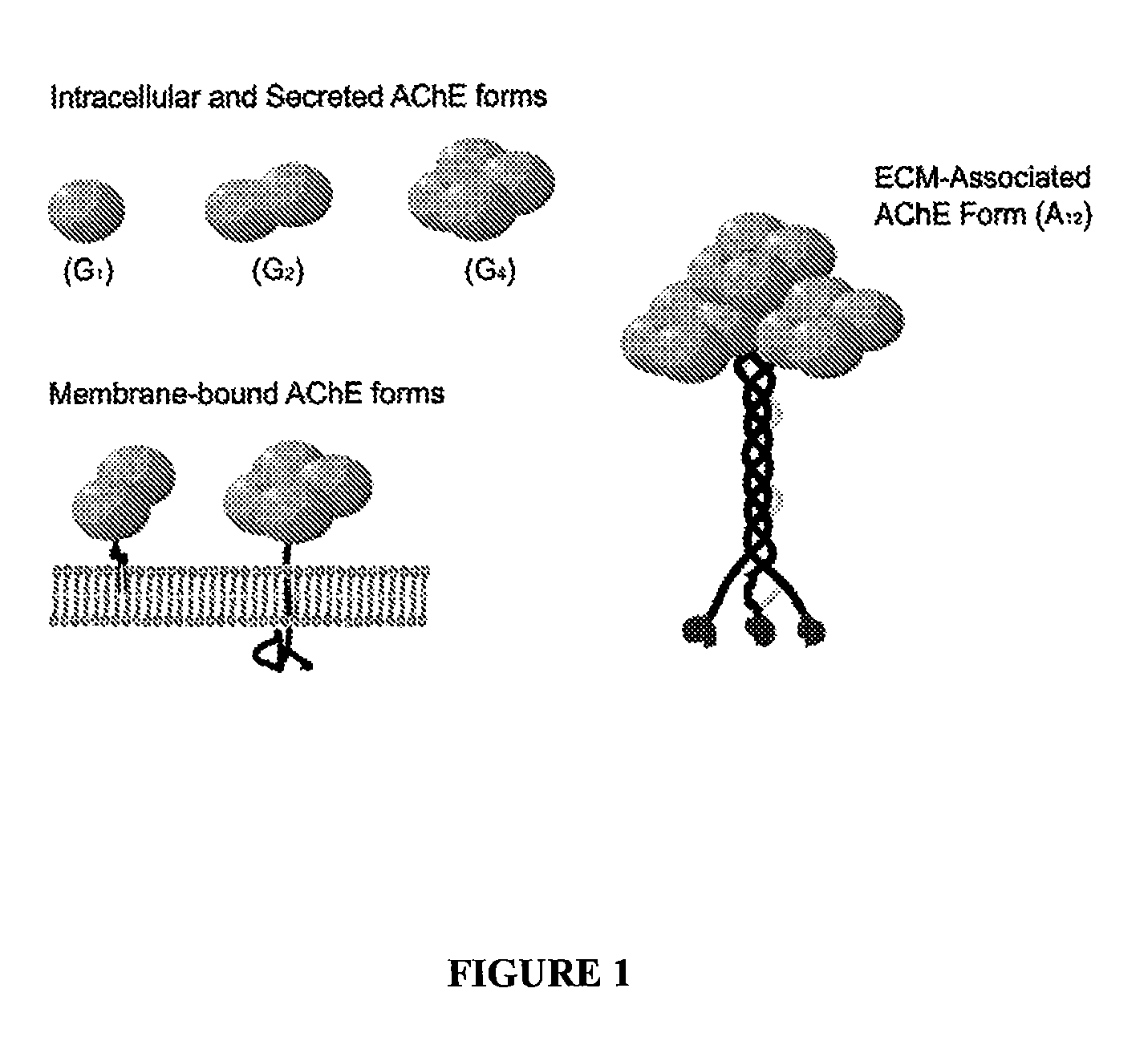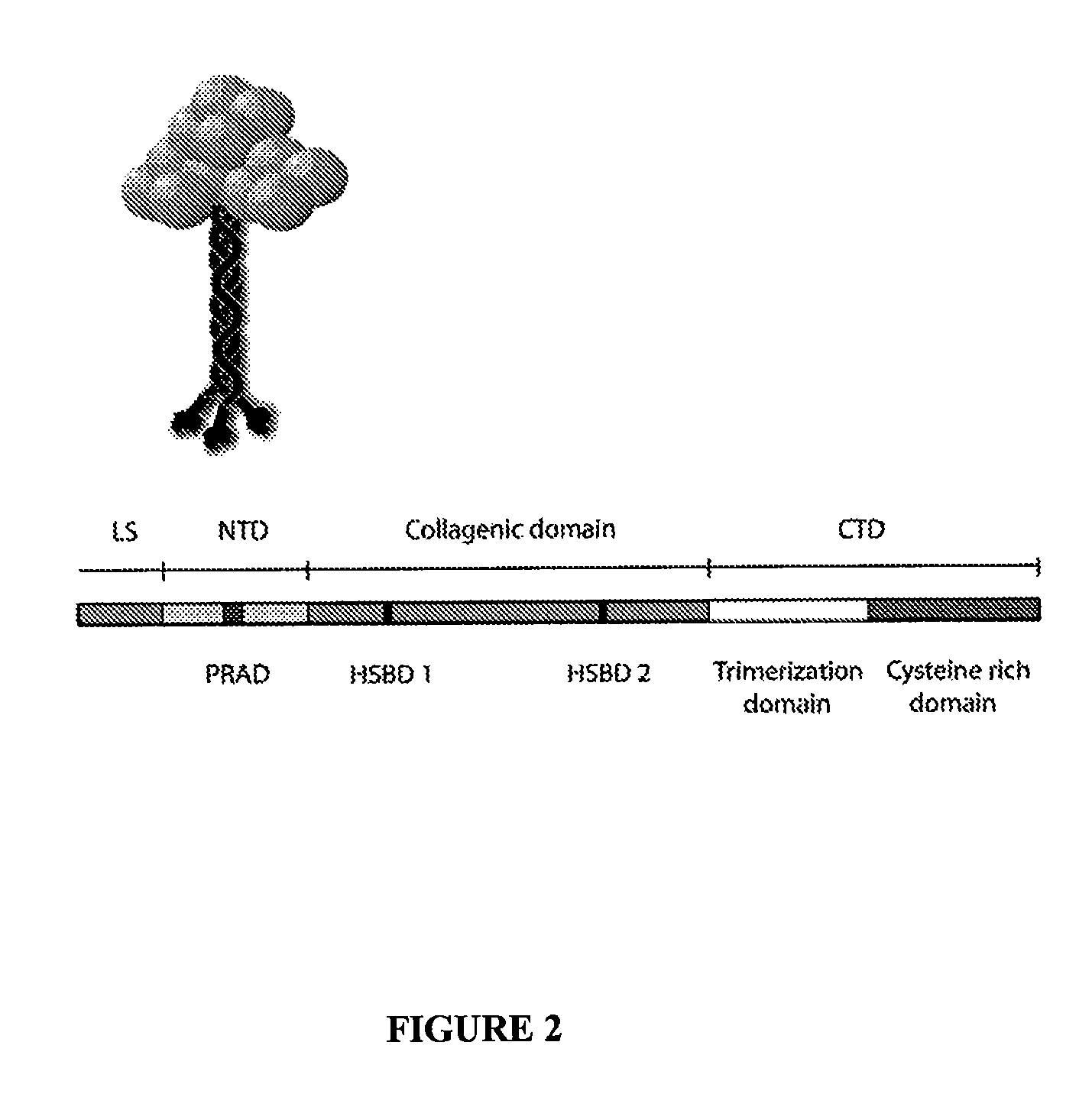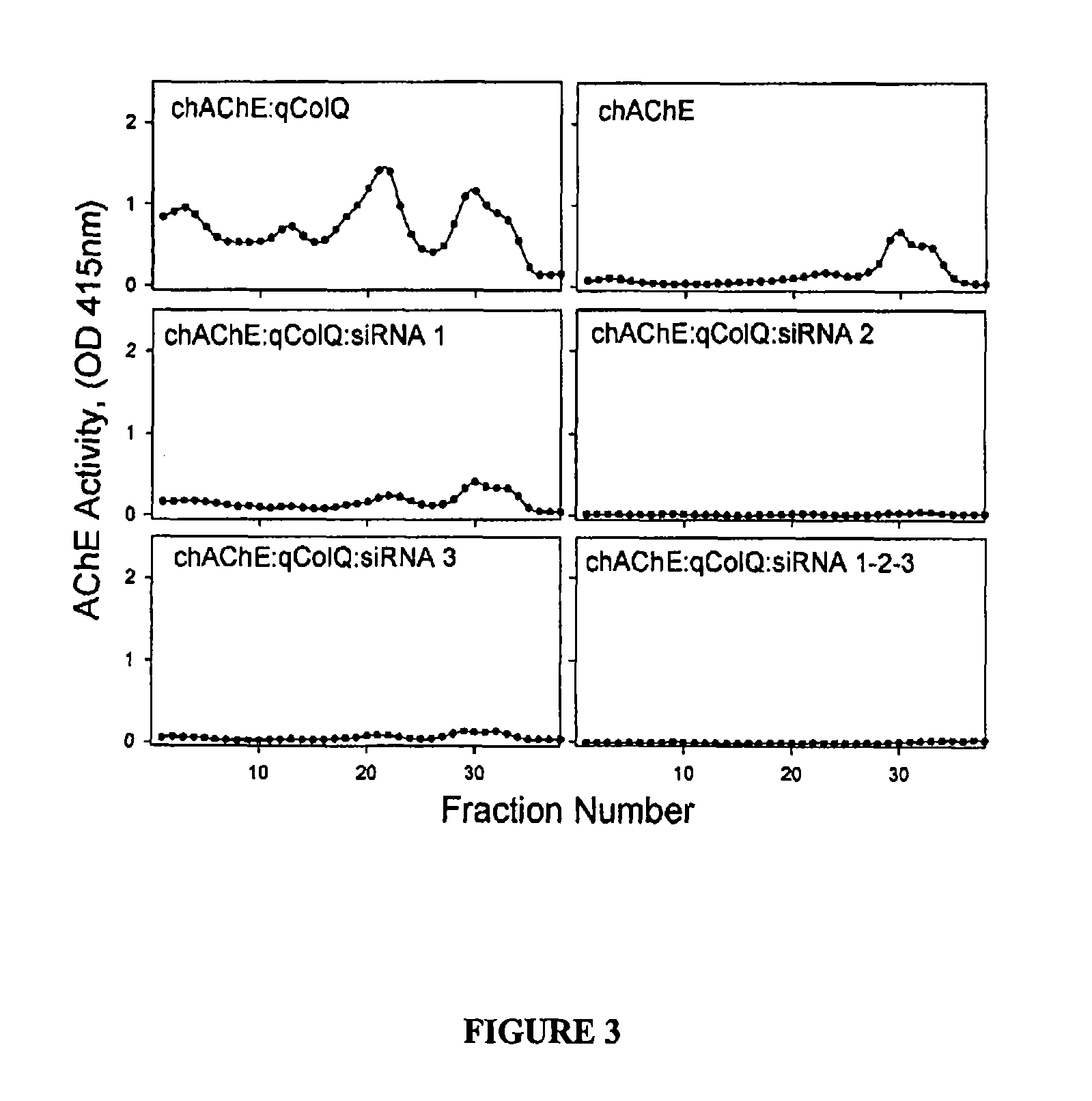Peptides that enhance acetylcholinesterase expression
a technology of acetylcholinesterase and peptides, which is applied in the field of cell biology, can solve the problems of loss of the ability to hydrolyze the substrate acetylcholine, high incidence of poisoning among field workers and the public, and rapid onset of toxic effects, so as to enhance endogenous acetylcholinesterase expression
- Summary
- Abstract
- Description
- Claims
- Application Information
AI Technical Summary
Problems solved by technology
Method used
Image
Examples
example 1
Co-Expression of the Cloned ColQ PRAD can Enhance AChE Expression
[0053]While developing a method for targeting AChE to the apical domain of polarized cells a construct consisting of the PRAD encoding N-terminal domain of ColQ (Qn) linked to the C-terminal domain of the GPI-anchored AChE form (Duval et al., 1992) was tested. This construct, in an expression vector, encodes a chimeric protein that can associate with AChEt and anchor it to the plasma membrane via the glycophosphoinositol moiety. When co-expressed with the rat AChEt subunit the enzyme was targeted to the apical domain of polarized epithelial cells, as predicted, but in addition resulted in a very large increase in AChE activity (FIG. 4). In some cells, such as the murine NIH-3T3 cell line, the effects of the PRAD can be even more pronounced (FIG. 5). This is not simply due to increased retention as in the absence of the GPI anchor there is still a large increase in secreted tetramers (see next Example).
example 2
Synthetic ColQ PRAD Peptides Alone can Enhance AChE Expression
[0054]Since co-expression of the several PRAD-containing constructs with AChE catalytic subunits resulted in the appearance of additional AChE activity, the PRAD peptide alone was tested for similar activity. The 17 amino acid ColQ PRAD polypeptide (SEQ ID NO:1) was commercially synthesized and purified. Incubation of several different cell types including primary skeletal muscle cells, COS cells and HEK-293 cells expressing AChE from several species all showed increased AChE expression in the presence of the ColQ PRAD peptide (FIG. 6).
[0055]A modified ColQ PRAD peptide was then developed that could be specifically targeted to the endoplasmic reticulum where the AChE molecules are vectorially discharged into the lumen co-translationally and locally assembled into multimers. A ColQ PRAD peptide was synthesized with an additional four amino acid KDEL (SEQ ID NO:3) sequence, the RER (rough endoplasmic reticulum) localization...
example 3
A Synthetic ColQ PRAD Peptide with a KDEL Sequence Localizes to the Rough Endoplasmic Reticulum
[0056]To determine whether the ColQ PRAD-KDEL peptide was being taken up by the cells and transported back to the endoplasmic reticulum as predicted, the companion peptide was labeled with the two lysine residues at the amino-terminus with Alexa-488 fluorophore. This fluorophore is very stable and photobleaches far less rapidly than fluorescein, Oregon Green and all other dyes in that wavelength range. Since the peptide has only one fluorophore per molecule, whereas the average secondary antibody molecule used for double labeling has 7-14 fluorophores conjugated, the difference in fluorescence intensities will be well over an order of magnitude and hence the need for a very stable dye.
[0057]COS cells were incubated for 6 hours with 10 uM Alexa 488 KK-ColQ PRAD-KDEL, rinsed, fixed with 4% paraformaldehyde and then permeabilized and co-stained with anti-protein disulfide isomerase (PDI) anti...
PUM
| Property | Measurement | Unit |
|---|---|---|
| pH | aaaaa | aaaaa |
| pH | aaaaa | aaaaa |
| total volume | aaaaa | aaaaa |
Abstract
Description
Claims
Application Information
 Login to View More
Login to View More - R&D
- Intellectual Property
- Life Sciences
- Materials
- Tech Scout
- Unparalleled Data Quality
- Higher Quality Content
- 60% Fewer Hallucinations
Browse by: Latest US Patents, China's latest patents, Technical Efficacy Thesaurus, Application Domain, Technology Topic, Popular Technical Reports.
© 2025 PatSnap. All rights reserved.Legal|Privacy policy|Modern Slavery Act Transparency Statement|Sitemap|About US| Contact US: help@patsnap.com



